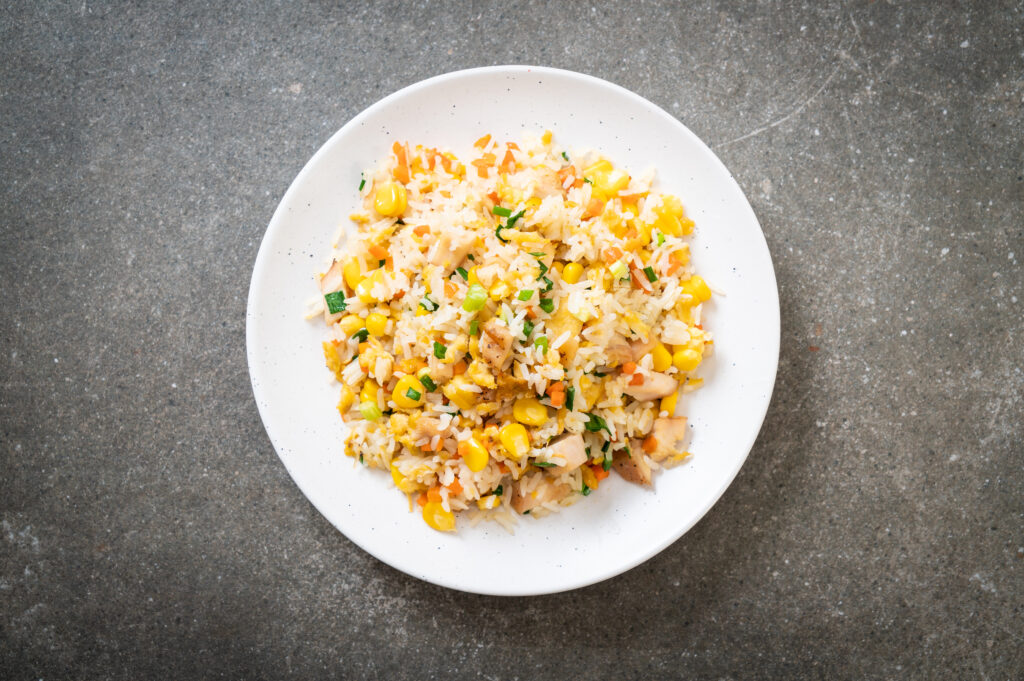- HUMOR
The 40 Very Best Dirty Jokes For Him


Egg fried rice is a beloved dish that has captured the hearts and palates of food lovers around the globe. Its simplicity, combined with the potential for complex flavors, makes it a staple in many households. This versatile dish can serve as a side or a main course, offering a canvas for creativity and cultural expression. Whether you’re a novice cook or a seasoned chef, mastering the art of egg fried rice can elevate your culinary repertoire and bring a taste of tradition to your kitchen.
The origins of egg fried rice can be traced back to the Sui Dynasty in China, around 589-618 AD. It was a practical solution to utilize leftover rice, transforming it into a delicious meal. Over the centuries, this dish has been adapted and embraced by various cultures, each adding their unique touch. In its essence, egg fried rice is a testament to resourcefulness and culinary ingenuity, evolving from a humble beginning to a global favorite.
As Chinese immigrants traveled around the world, they brought with them their culinary traditions, including fried rice. This led to the dish’s integration into local cuisines, resulting in a myriad of regional variations. The adaptability of egg fried rice is a key factor in its enduring popularity, allowing it to transcend cultural boundaries while retaining its fundamental characteristics.
The foundation of any good egg fried rice lies in its ingredients. While the core components remain consistent, the quality and preparation of these ingredients can significantly impact the final dish. Here are the essential ingredients:
Each ingredient plays a vital role in creating a balanced and flavorful dish. The key is to maintain harmony, ensuring that no single element overpowers the others.

Cooking egg fried rice is a straightforward process, but attention to detail can elevate your dish from ordinary to extraordinary. Follow these steps for a perfect result:
By following these steps, you can create a delicious and satisfying egg fried rice that rivals your favorite takeout.
The beauty of egg fried rice lies in its adaptability. Different cultures have embraced this dish, infusing it with local flavors and ingredients. Here are three popular variations:
Nasi Goreng is Indonesia’s take on fried rice, characterized by its rich, smoky flavor. It typically includes kecap manis (a sweet soy sauce), shrimp paste, and a variety of proteins such as chicken or shrimp. A fried egg often tops the dish, adding an extra layer of richness.
Thai Khao Pad is a fragrant version of fried rice, often seasoned with fish sauce, lime juice, and fresh herbs like cilantro. It’s commonly served with slices of cucumber and a wedge of lime, offering a refreshing contrast to the savory rice.
Japanese Chahan incorporates traditional Japanese ingredients such as soy sauce, mirin, and sometimes dashi for a subtle umami flavor. It’s a staple in Japanese households, often featuring vegetables and proteins like pork or seafood.
These variations showcase the global appeal of egg fried rice, allowing you to explore diverse flavors while maintaining the dish’s core essence.
For those seeking a healthier version of egg fried rice, there are several ingredient substitutions and techniques that can reduce calories and increase nutritional value:
These adjustments can help you enjoy egg fried rice as part of a balanced diet without compromising on taste.
Innovation in the kitchen has led to creative interpretations of egg fried rice, incorporating unexpected ingredients and techniques. Here are some modern twists to try:
These modern variations demonstrate the endless possibilities of egg fried rice, inviting you to experiment and discover new favorites.
Egg fried rice is a versatile dish that pairs well with a variety of accompaniments. Here are some suggestions to complete your meal:
These pairings enhance the dining experience, ensuring that egg fried rice remains the star of a satisfying and delicious meal.